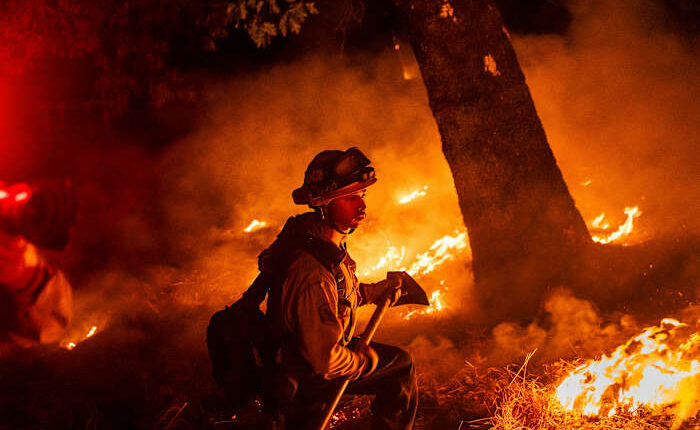Share this @internewscast.com

Wildfires in California’s wine country and Central Oregon escalated overnight, leading to extensive evacuations as firefighters battled on Sunday to manage the fires in the midst of dry and scorching conditions.
The Pickett Fire in Napa County expanded to cover over 10 square miles (26 square kilometers) and was just 11% contained by early Sunday, according to the California Department of Forestry & Fire Protection.
Approximately 190 residents were instructed to evacuate their homes, with an additional 360 under evacuation alerts as the fire posed a threat to around 500 buildings near Aetna Springs and Pope Valley, stated Jason Clay, spokesperson for Calfire Sonoma Lake-Napa Unit.
Over 1,230 firefighters, supported by 10 helicopters, were fighting the blaze, which ignited on Thursday after a period of intense heat. The origin of the fire remains under investigation.
The Western U.S. has been suffering under a heatwave that caused hospitalizations, with temperatures predicted to reach dangerous highs over the weekend across Washington, Oregon, Southern California, Nevada, and Arizona.
According to Clay, weather conditions have slightly improved since the fire began, with Sunday’s high anticipated to reach 94 degrees (34 Celsius). However, as the day progresses, a drop in humidity and an increase in wind speeds were expected in the afternoon.
“That’s been a driving factor in the afternoons since we’ve seen the fire activity pick up for the last three days,” Clay said, adding that “support from all up and down California has been critical to our efforts.”
The fire began in the same area as the much larger Glass Fire in 2020, which crossed into Sonoma County and eventually burned about 105 square miles (272 square kilometers) and more than 1,500 structures.
That fire was driven by wind, while the current fire is fueled by dry vegetation on steep slopes — some of it dead and downed trees left over from the Glass Fire and some of it grass and brush that grew back and then dried out again, said Clay.
In Oregon, the Flat Fire in Deschutes and Jefferson counties had grown to almost 34 square miles (88 square kilometers), with no containment, and threatened nearly 4,000 homes, according to the state Fire Marshal’s Office. About 10,000 people were under some sort of evacuation notice.
The fire began Thursday night and grew quickly amid hot, gusty conditions. Fire officials were keeping an eye on isolated thunderstorms in Southern Oregon that could drift north on Sunday, spokesman Chris Schimmer said in a video posted to Facebook.
Although it’s difficult to directly tie a single fire or weather event directly to climate change, scientists say human-caused warming from burning fossil fuels like coal and gas is causing more intense heat waves and droughts, which in turn set the stage for more destructive wildfires.
___
The Associated Press’ climate and environmental coverage receives financial support from multiple private foundations. AP is solely responsible for all content. Find AP’s standards for working with philanthropies, a list of supporters and funded coverage areas at AP.org.
Copyright 2025 The Associated Press. All rights reserved. This material may not be published, broadcast, rewritten or redistributed without permission.












